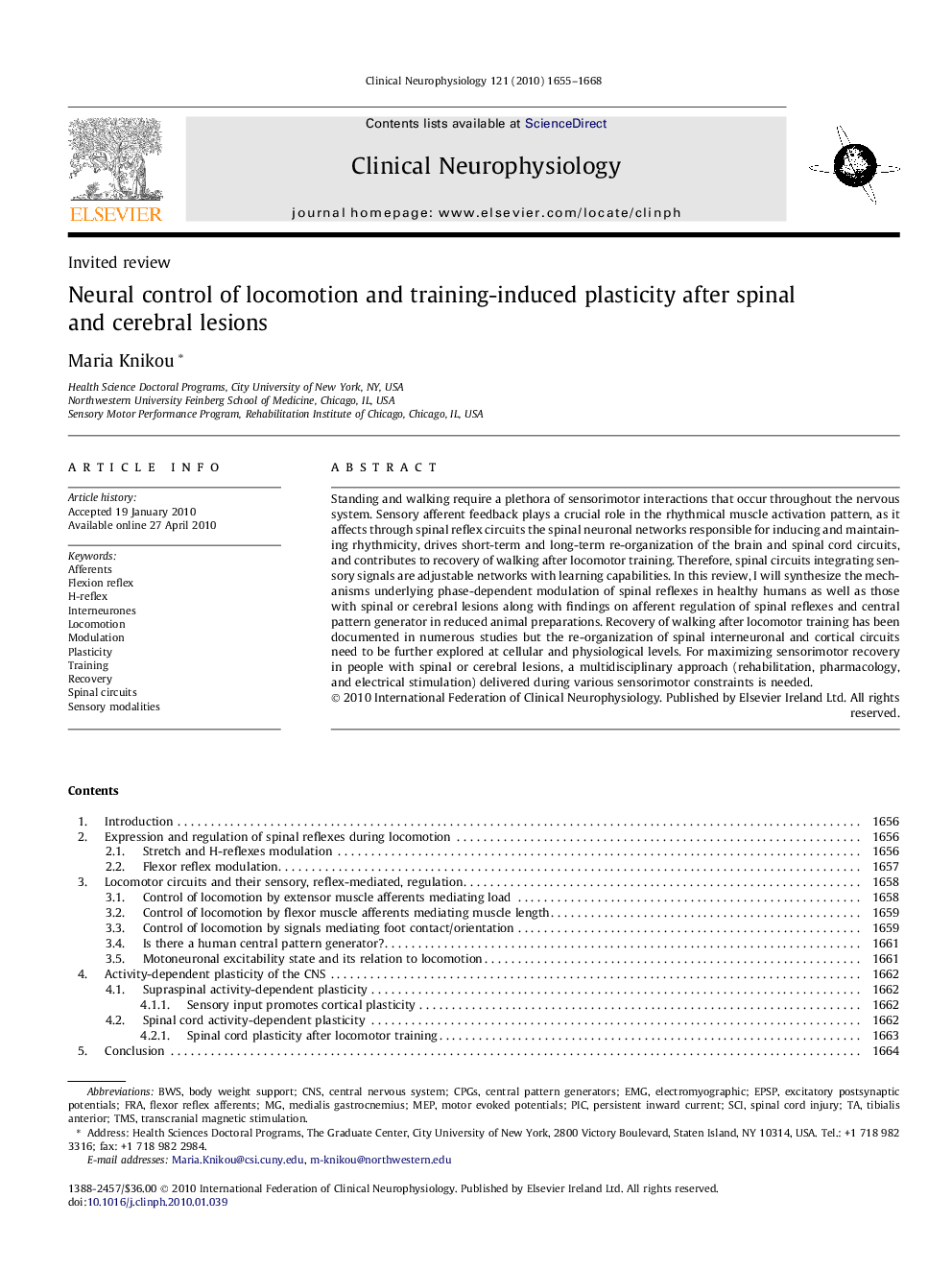| Article ID | Journal | Published Year | Pages | File Type |
|---|---|---|---|---|
| 3045114 | Clinical Neurophysiology | 2010 | 14 Pages |
Standing and walking require a plethora of sensorimotor interactions that occur throughout the nervous system. Sensory afferent feedback plays a crucial role in the rhythmical muscle activation pattern, as it affects through spinal reflex circuits the spinal neuronal networks responsible for inducing and maintaining rhythmicity, drives short-term and long-term re-organization of the brain and spinal cord circuits, and contributes to recovery of walking after locomotor training. Therefore, spinal circuits integrating sensory signals are adjustable networks with learning capabilities. In this review, I will synthesize the mechanisms underlying phase-dependent modulation of spinal reflexes in healthy humans as well as those with spinal or cerebral lesions along with findings on afferent regulation of spinal reflexes and central pattern generator in reduced animal preparations. Recovery of walking after locomotor training has been documented in numerous studies but the re-organization of spinal interneuronal and cortical circuits need to be further explored at cellular and physiological levels. For maximizing sensorimotor recovery in people with spinal or cerebral lesions, a multidisciplinary approach (rehabilitation, pharmacology, and electrical stimulation) delivered during various sensorimotor constraints is needed.
